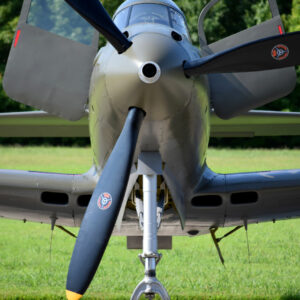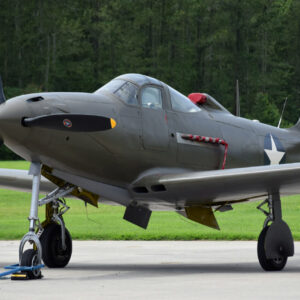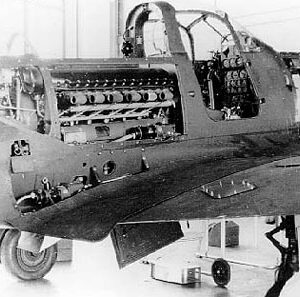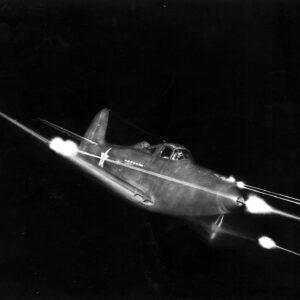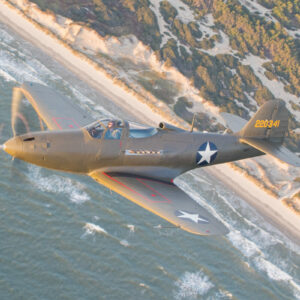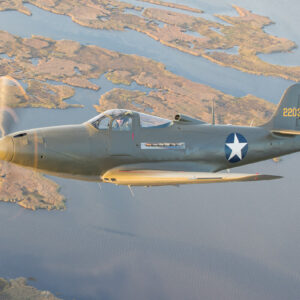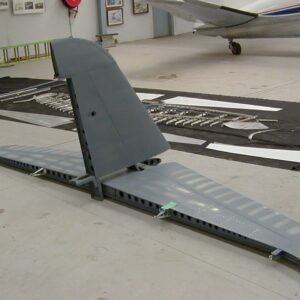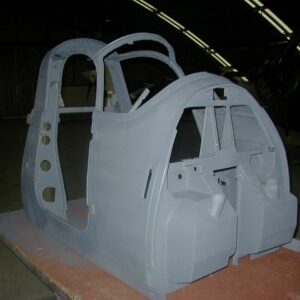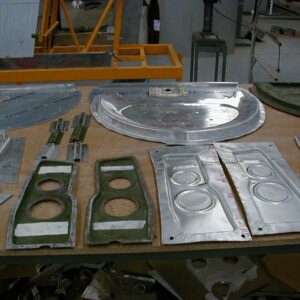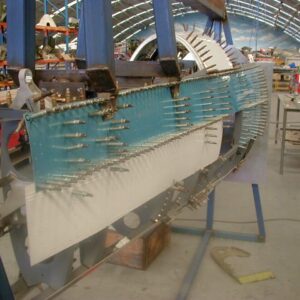The Museum’s P-39F was built for the United States Army Air Corps as serial number 41-7215. One of just a handful of these unusual airplanes still flying, the aircraft was recovered from a wreck site on the Cape York Peninsula in Queensland, Australia. It crashed at this location on May 1, 1942, with its pilot Lt. Walter Harvey surviving the crash. Lt. Harvey went on to fly 131 successful combat missions during the war after being found and rescued after walking for two days along the coast of northern Australia.
Constructed by Bell in New York, the airplane was assigned the construction number 15-554. Following its completion the airplane was disassembled and shipped to Australia, where it was reassembled and assigned to the 36th Squadron, 8th Fighter Group based at Anthill Plains Aerodrome. The accident that would see the airplane preserved occurred when it was being deployed to Port Moresby to slow the Japanese advance in the region.
The six Airacobras of D flight encountered a severe storm near Horn Island, one of their scheduled fuel stops. Inexperienced at instrument flying and running out of fuel, Lt. Charles Falletta lead the group toward the mainland to look for a landing area. His P-39, as well as ours, crashed about 8 miles inland, where they remained until they were recovered in 1972.
The relatively intact aircraft meant that Pioneer Aero Ltd. had an advantage during the restoration, being able to re-use much of the original material.
Remembering the ALSIB Route: Our aircraft wears the markings of a P-39Q, 42-20341 which was one of the aircraft supplied to the Soviet Union. More than 4,700 Bell P-39s were supplied to the Soviets for use as a low-to-mid altitude fighter. These airplanes were delivered across one of the most unusual airborne resupply routes of the war, traveling across the sea from Alaska to Siberia.
Single seat aircraft like P-39s or P-63s were flown in groupings with B-25s or A-20s to provide navigational support, and a safety watch over the single seat aircraft as they traversed the vast distance. P-39s that were built in Wheatfield, New York would be flown to Great Falls, Montana, in many cases by female pilots of the Women Airforce Service Pilots (WASP). From Great Falls to Fairbanks, Alaska (or Nome) the airplanes would be flown by American male pilots, who would then turn them over to their Soviet peers. Following inspection, the Soviet pilots would then fly the aircraft on to Krasnoyarsk, 3,498 miles away.
Did You know?
The P-39 was equipped with an impressive 37mm cannon! Although powerful, it was generally not used by the Russians for tank busting as is sometimes thought. This understanding of its use stemmed from a mistranslation in Russian wartime documents.
Specifications
- Number Built: 9,529 total Airacobras (229 F variants)
- Year Produced: 1942
- Serial Number: 41-7215
- Crew: (1) Pilot
- Current Pilots:
Dimensions
- Length: 30 ft. 2 in.
- Wingspan: 34 ft.
- Empty Weight: 6,516 lbs.
- Loaded Weight: 7,570 lbs.
- Engine: Allison V-1710-85 V-type engine
- Engine Power: 1,200 hp
Performance
- Cruising Speed: 250 mph
- Max Speed: 376 mph
- Range: 525 miles
- Ceiling: 35,000 ft
- Rate of Climb: 2,197 ft./min. initial
Armament
- 1x 37 mm cannon firing through the nose cone
- 2x 0.50 caliber machine guns in the nose
- 4x 0.50 caliber machine guns in the wings – 2x per wing
- Up to 500 lbs. bomb load
*MAM aircraft is unarmed

